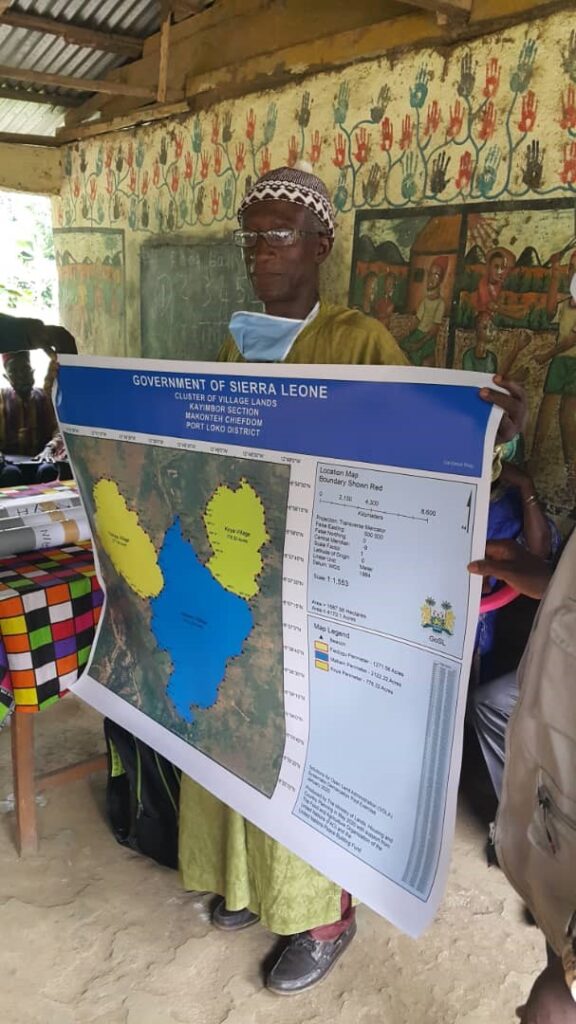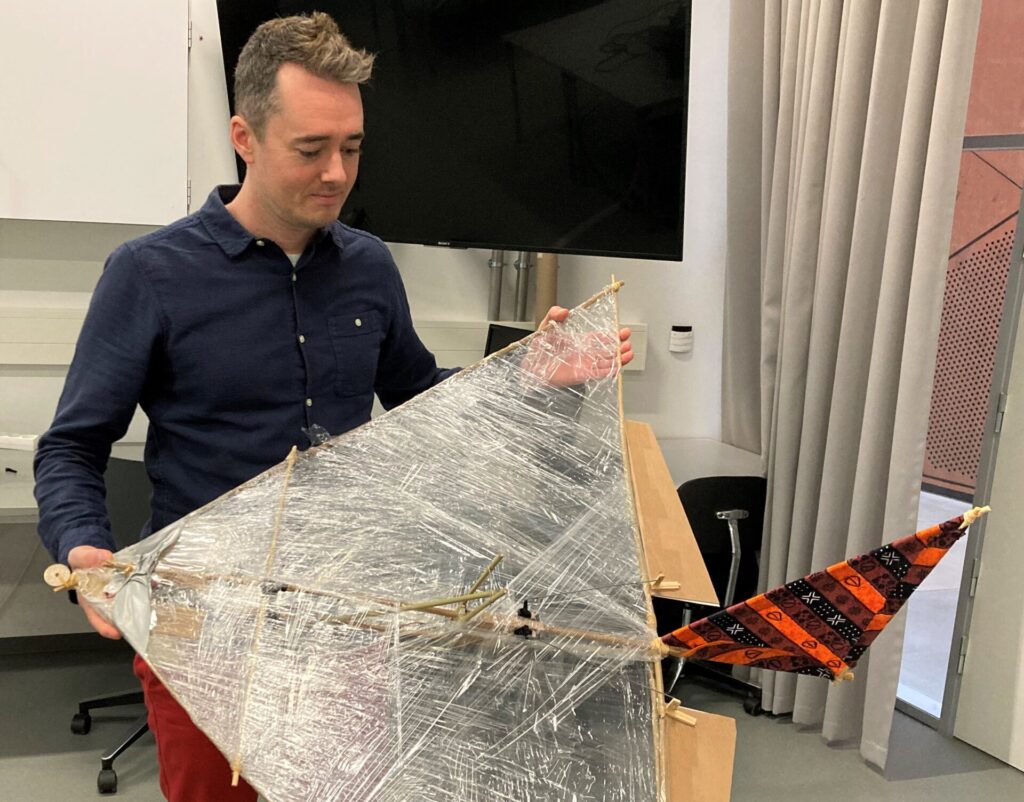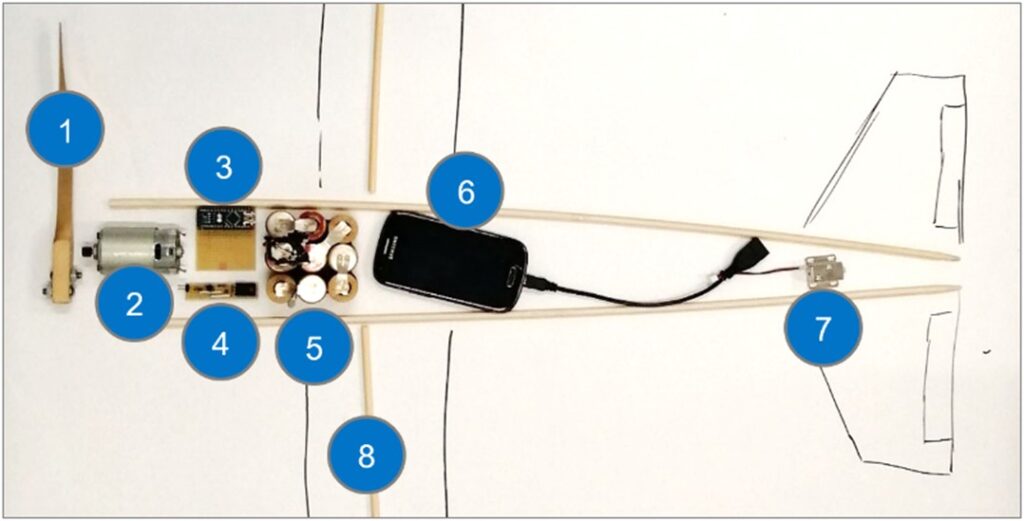Engineers and other staff from University of Southern Denmark are deeply involved in making drones with the precise purpose that they shall be used to ensure much more equal management of disputed land rights in Sierra Leone.
Sierra Leone is a vast country. However, only 0,001 percent of its total area of 77.000 square kilometers are mapped, and that is an urgent problem for the local population whose land rights have been under attack for several years. Nowadays, obviously useful tools to get all this mapping done are using drones, but in order to get the whole country mapped, you will need hundreds of drones. Dylan Cawthorne, colleagues, and students from the SDU Unmanned Aerial Systems Center at the University of Southern Denmark took upon themselves the task – in cooperation with Engineers Without Borders Denmark and local partners – to develop an inexpensive drone for that purpose.
The project is just at its beginning, but a prototype of this ”Upcycled African Drone”, built according to what Dylan Cawthorne calls a ”value sensitive design”, has been built. Originally, Dylan Cawthorne comes from the U.S., but in recent years he has been an associate professor and one of the anchormen of the drone department at SDU’s Mærsk Institute. He is a mechanical engineer within aerospace and an expert in the mechanical aspects behind ”everything that flies”. Recently, however, he has been focusing more on the ethical aspects of the technology in front of him. The big challenge in the Sierra Leone project is that more than 60 percent of the population of the country depends on farming for their livelihood and food, but their disputed land rights are poorly documented, leading to many conflicts.
”The increased focus on land rights and natural resource management in the country include reforestation and tree planting in order to ”re-green” Sierra Leone”, Dylan Cawthorne explains. Therefore, he and his colleagues sat down to build, at very low cost and from bamboo sticks and other materials available in the country, a prototype drone for the mapping project. ”I am very interested in seeing how extreme we can be in localizing the fabric of this drone”, he explains.
Value Sensitive Design
The approach is what is called ”VSD”, Value sensitive design. A methodology for taking human values and the social impact of technology as input during the design process. ”Human values and contextual factors are then translated into design requirements which we as engineers can work with”.
”The approach is grounded in the idea that technology is a key feature in economic growth and consequently a necessity to improve living conditions and empower local populations. However, true empowerment does not come from importing technologies from abroad causing dependencies and reducing ownership. It comes from designing and locally manufacturing technologies suited to the context and needs of the people”, Dylan Cawthorne says. The local strife comes from the historical fact that ”poor people have inherited land, they own and occupy and use it for farming, but their land rights are not established on a legal basis. Foreign companies often lease land and do mining operations. They are taking more and more of people’s land and extracting more and more resources from it”.
”It is a major problem for the poor, and it is an even bigger problem for women among the poor because women’s’ land rights have not always been respected”, Dylan Cawthorne continues. ”Only recently it has been established in law that female heads of households do exist”.
”They don’t know the border of their lands and whether the mining company is taking more than they had originally agreed to. The citizens have no recourse because they cannot prove that this is in fact their land”. Besides SDU and Engineers Without Borders, the project is carried out in cooperation with an NGO called Young Surveyers – a part of the International Federation of Surveyors – and the land ministry of Sierra Leone. ”We wanted to empower local people to produce the drones themselves, so that they could use them themselves in order to map their own country. Normally, the cost of developing such a drone would be very high, but we needed to make it as inexpensive as possible. An app was developed by a master student, making it possible to use an old android smartphone as flight controller of the drone, we used old laptop batteries to power the drone”. In the end it took Dylan Cawthorne about 15 minutes to assemble the low cost and lightweight drone that can be used for the task ahead of it.
”Can drones contribute to make the world a better place?”. That is the question which Dylan Cawthorne puts to himself every day. ”Earlier in my career, I was convinced that if I just made jets and high-tech stuff, that would move society forward. Technology is good because it moves us forward. Therefore, I make technology to make the world become a little bit better. But as I grew older, I became slightly more skeptical about this approach. I felt there need to be some nuances to it, because technology is not neutral. My research background has gradually become more holistic. I am asking myself what is the point of what I am doing”.
Recycling electronic waste
Dylan Cawthorne has built dozens of drones in his career. It has become his area of expertise in combination with ethically informed design processes. Most recently, he has built a drone for transport of medical samples between Danish hospitals. ”Drones are an upcoming technology. They contain a certain amount of risk in different areas, but they also offer a lot of promise. In a place like Africa, the potentials are massive. In managing the water in South Africa, for instance, maybe drones can help. The potentials for using drones in managed agriculture are quite significant. Maybe we can actively engage in a very precise kind of farming instead of spreading the whole fields with pesticides”.
One aspect which Dylan Cawthorne and his colleagues have focused on is how to recycle old batteries and electronics in these kinds of African drones? ”If I designed a drone for this purpose, using all-new components, I would be part of the enormous problem with electronic waste in the continent. But if I take something which is already discarded as hazardous waste and use it in a new drone, I am turning a negative thing into a positive thing. That is purely win-win”
Certainly, a large second-hand market for batteries and electronics already exist in Sierra Leone. ”There is quite a stock of old computers, old laptops, old batteries. Let’s elevate them rather than downgrade them. If you take the idea of second-hand production out of used components very seriously and take it to the extreme, you can end up with a drone like the one we are building for the mapping project”. ”Sometimes in academia, we just sit and write and write, hoping that someone will one day be reading what we write. In this process with the mapping drone, however, things are happening very quickly. That is incredibly challenging, as well as incredibly fulfilling”.
Of course, the idea is to shape the foundations for local people to at some point take over the drone production and mapping. ”We will co-develop the concepts and some of the software, and from then we will just be watching the development in cooperation with the local universities. Through this capacity building, we can not only empower the local people with drones, but with the ability to use technology by themselves and to support their own values.”



Video: Ethics and design of healthcare and humanitarian drones


